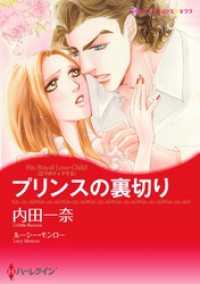Full Description
This edited volume extends our field of studies by highlighting novel 21st century curricular designs and pedagogical practices in the preparation of future bilingual teachers and their relevance for advancing curriculum, instruction, and educational achievement across bilingual school contexts. In particular, the volume provides a much-needed overview of innovative bilingual teacher preparation practices designed and implemented to develop bilingual teacher professionals equipped to effect curricular and pedagogical changes in bilingual settings. As such, two main questions guiding the orchestration of the volume are: (a) What innovative curricular and pedagogical designs characterize the field of bilingual teacher education in 21st century? and (b) How do or could these innovative curricular and pedagogical approaches for educating future bilingual teachers influence teacher practices in bilingual contexts for advancing curriculum, pedagogy and the achievement of bilingual learners?
Contents
Foreword; Carmen M. Martínez-Roldán.
Acknowledgments.
Introduction—Pushing the Boundaries of Curricular and Pedagogical Innovations in Bilingual Teacher Education: Toward Renewed Movement Building; Cristian R. Aquino-Sterling, Belinda Bustos Flores, and Mileidis Gort.
Part I. Conceptualizing Curricular And Pedagogical Innovations In Bilingual Teacher Education.
Chapter 1. Conceptualizing and Realizing Bilingual Education for Social Transformation; María del Rosario Zavala and Josephine Arce.
Chapter 2. Nuevos desafíos: la importancia de ideologías heteroglósicas y críticas en la capacitación docente bilingüe; Katherine Barko-Alva y Christian E. Zúñiga.
Chapter 3. Reconceptualizing Bilingual/Dual-Language Teacher Education to Promote Disciplinary Biliteracies in STEM; Marialuisa Di Stefano, Idalis Villanueva Alarcón, and Alberto Esquinca.
Chapter 4. Cultivating Bilingual Education in Massachusetts: From Survival to Restoration; Jasmine Alvarado and Patrick Proctor.
Part II. Implementing Curricular And Pedagogical Innovations In Bilingual Teacher Education.
Chapter 5. Bilingual Coteaching in the Art Museum: A Linguistic and Culturally Authentic Field Instruction Experience for Bilingual Teacher Education Candidates; Haydeé Marie Rodríguez, Lucía Cárdenas Curiel, and Andrea Saenz.
Chapter 6. Learning to Listen to Multilingual Kids: Merging Theory and Practice in Preservice Bilingual Teacher Education; Janelle Franco, Andréa C. Minkoff, Marjorie Elaine Faulstich Orellana.
Chapter 7. El desarrollo de competencias en español pedagógico: hacia una visión multidimensional del quehacer lingüístico del docente en educación bilingüe; Cristian R. Aquino-Sterling.
Part III. Researching Curricular And Pedagogical Innovations In Bilingual Teacher Education.
Chapter 8. Teaching and Learning Multiliteracies: Case Study of Bilingual Teacher Candidates in a Clinically-Rich Literacy Methods Course; Anissa Wicktor Lynch and Elizabeth A. Morphis.
Chapter 9. Reconsidering Teaching and Learning in the Bilingual Mathematics Classroom; Gladys H. Krause and Luz A. Maldonado Rodríguez.
Chapter 10. Developing a Funds of Knowledge Inventory to Enhance Instruction in Bilingual Settings; Eric J. Johnson.
Afterword; Patricia Sánchez.
Contributors.
Index.
-

- 電子書籍
- プリンスの裏切り〈三つのティアラ II…
-

- 和書
- 特論NMR立体化学


![スタジオ地図カレンダー 〈2018〉 [カレンダー]](../images/goods/ar2/web/imgdata2/49909/4990991400.jpg)


